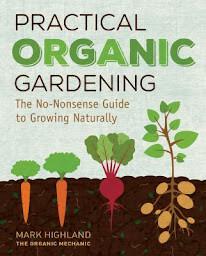Backyard Wildlife Habitat
What lives in your yard? This is a question we don’t think about too often, but we should if we’d like to be eco-conscious. Backyard creatures are facing habitat loss and we can easily help by taking a few simple steps to make our yards
more friendly to small creatures such as birds, rabbits, bees, butterflies and frogs.
Below are some things to consider in order to create a wildlife-friendly habitat in your yard. They are easy to do, are generally inexpensive and don’t require a lot of space. Many of them can even be accomplished on a balcony.
Making your yard wildlife friendly is not just good for local flora and fauna but is also fun. It won’t take long before you begin observing and enjoying the creatures that will be drawn to your yard. Below are a few photos from my yard, including a young rabbit with a funny leg that my kids have named “Poof”. He (or she?) is a regular visitor to our yard and lets us get quite close without being afraid! We also see a wide variety of birds. Woodpeckers and hummingbirds are always my favorites, although I also enjoyed the family of wrens that moved into my birdhouse this spring.






Below are some titles in our collection that can help you get started. Happy gardening!
Attracting Birds and Butterflies: How to Plant a Backyard Habitat to Attract Winged Wildlife by Barbara W. Ellis
Super Simple Backyard Projects: Fun & Easy Animal Environment Activities by Carolyn Bernhardt
The Humane Gardener: Nurturing a Backyard Habitat for Wildlife by Nancy Lawson
Bird Homes and Habitats by Bill Thompson
Practical Organic Gardening by Mark Highland
Rodale's Ultimate Encyclopedia of Organic Gardening: The Indispensable Green Resource for Every Gardener edited by Fern Marshall Bradley
Tomorrow's Garden: Design and Inspiration for a New Age of Sustainable Gardening by Stephen Orr
Below are some things to consider in order to create a wildlife-friendly habitat in your yard. They are easy to do, are generally inexpensive and don’t require a lot of space. Many of them can even be accomplished on a balcony.
-
Food: Food sources can be man-made, such as birdfeeders and hummingbird feeders, or natural, like pollen and seeds provided by plants.
-
Water: A simple birdbath is a great water source. Of course, man-made ponds or naturally occurring ponds or streams can provide water as well.
-
Shelter: Backyard creatures need places to take shelter, live and raise young. Rock, stick or brush piles create nooks and crannies that small animals can find refuge in. You can also provide man-made houses for birds, toads,
bats and butterflies. Planting host plants on which insects can lay eggs is also extremely helpful. Monarch butterflies, for instance, need milkweed plants to lay their eggs.
-
Go Native: Try to replace invasive plants and extensive lawns with native plants. Native plants are best for local wildlife, since they are their natural food sources. They are also easier to grow because the wildlife that is
drawn to your native plants will help pollinate them and spread seeds. Some plants native to NJ include:
-
Wood anemone
-
Great blue lobelia
-
Stiff dogwood
-
Sugar maple
-
Asters
-
Milkweeds
-
Violets
-
Blueberries
-
Viburnums
-
Beebalm
-
Goldenrods
-
Sunflowers
-
Common serviceberry
-
Birches
-
Trumpet creeper
-
Sedges
-
Hickory trees
-
American holly
- Sustainable practices: Try to employ sustainable practices in your yard. These can include avoiding pesticides and chemical fertilizers, composting, and reducing water use. You can reduce water use by using soaker hoses, rain barrels or planting a rain garden.
Making your yard wildlife friendly is not just good for local flora and fauna but is also fun. It won’t take long before you begin observing and enjoying the creatures that will be drawn to your yard. Below are a few photos from my yard, including a young rabbit with a funny leg that my kids have named “Poof”. He (or she?) is a regular visitor to our yard and lets us get quite close without being afraid! We also see a wide variety of birds. Woodpeckers and hummingbirds are always my favorites, although I also enjoyed the family of wrens that moved into my birdhouse this spring.






Below are some titles in our collection that can help you get started. Happy gardening!
Attracting Birds and Butterflies: How to Plant a Backyard Habitat to Attract Winged Wildlife by Barbara W. Ellis
Super Simple Backyard Projects: Fun & Easy Animal Environment Activities by Carolyn Bernhardt
The Humane Gardener: Nurturing a Backyard Habitat for Wildlife by Nancy Lawson
Bird Homes and Habitats by Bill Thompson
Practical Organic Gardening by Mark Highland
Rodale's Ultimate Encyclopedia of Organic Gardening: The Indispensable Green Resource for Every Gardener edited by Fern Marshall Bradley
Tomorrow's Garden: Design and Inspiration for a New Age of Sustainable Gardening by Stephen Orr
- by Christine C., Hollowbrook Branch







Comments
Post a Comment